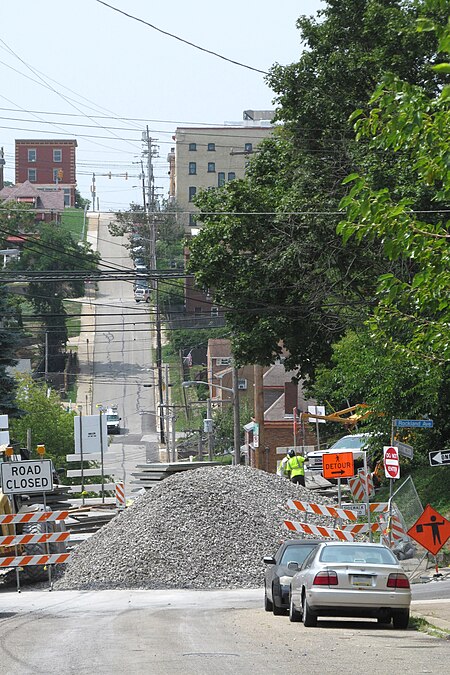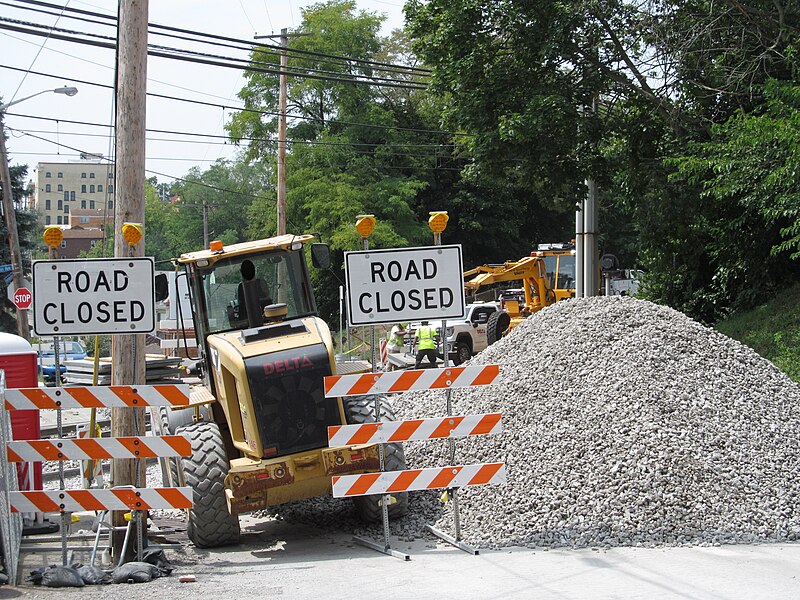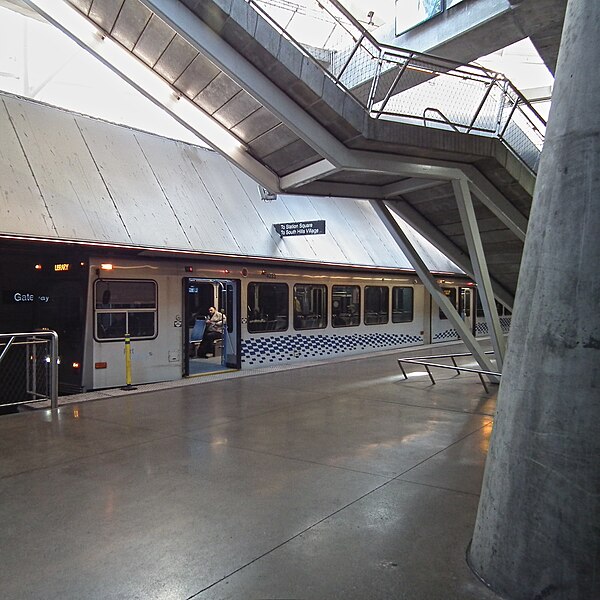
This odd little building in the middle of a gravel lot is a remnant of the largest streetcar system in the United States.

We’ve already seen this picture of Arlington Avenue with the Route 48 streetcar poking its head out of the streetcar loop. That loop is still there, though the tracks have been taken up. You can see this little shelter right behind the trolley in the 1968 picture.
In the 1960s. Pittsburgh had the largest remaining streetcar system in the country. We had lagged behind other cities in converting to bus transit, but the Port Authority, newly responsible for the transit system, was canceling streetcar lines right and left. (Some lines have survived—the lines that had their own right-of-way for most of the route, and thus would have been expensive or impossible to convert to buses.) The Arlington line would not survive long after that picture; the Route 48 streetcar became the Route 48 bus.

Here the Route 48 bus passes a mural with a picture of its predecessor, the Route 48 streetcar. The “Arlington Memories” murals are fading and will soon be memories themselves. The Route 48 streetcar line used to make a loop around the shelter and head back inbound on Arlington Avenue.





























